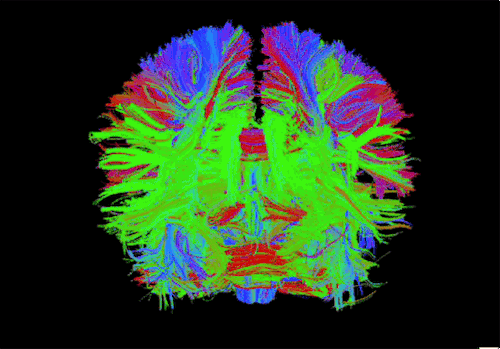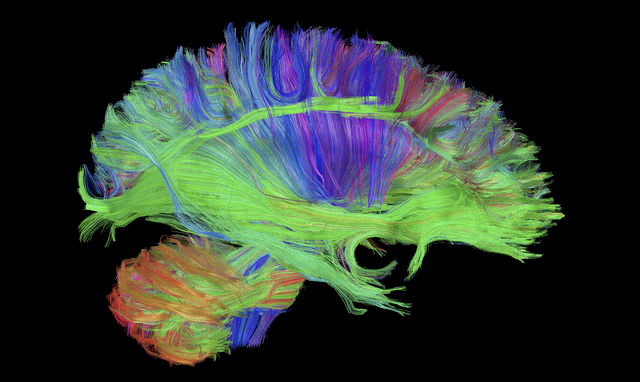Magnetic Resonance Imaging has come a long way in the three decades since its inception in GE research lab in upstate New York. In fact, the advancement in its capabilities over that time have been simply staggering. Just look at the image above. That’s a picture of somebody’s brain.

And it’s not just any picture. Captured by GE’s Discovery MR750 3.0T, an MRI machine equipped with a 3 Tesla magnet 60,000 times more powerful than the Earth’s own magnetic field (also twice as powerful as the first GE MRI and only one Tesla weaker than the magnets used in CERN), the image above depicts the brain’s connective white matter tissue and is being used by researchers as a sort of “wiring diagram” to better monitor how the latest generation of drugs in the battle against neurodegenerative disease actually operate within the physical structure of the brain and how they affect brain function.
As opposed to X-rays, which fire radioactive particles through your body to obtain their images, the intense magnetic field of an MRI instead jiggles the water molecules within your organs that in turn generate a radio signal that can be detected outside of the body. And since there isn’t a part of your that doesn’t contain water, the system is able to detect where the radio signal is originating and generate a real-time 3D model of the system.

In the future, these and similar MRI devices are expected to play a larger part in both disease research, therapy, and preventative medicine. Who knows what doctors will be able to find when they’re able to so easily peek inside our bodies with magnets. [GE Reports]
Picture: Luca Marinelli, Ek Tsoon Tan
